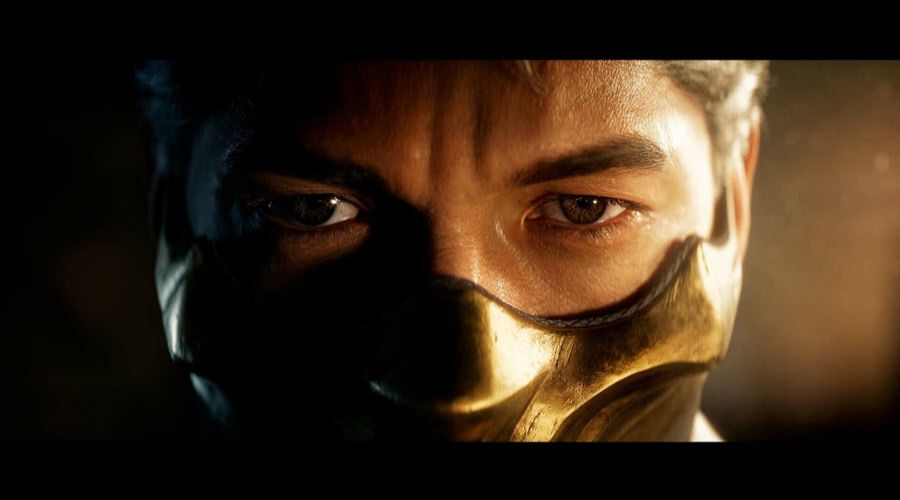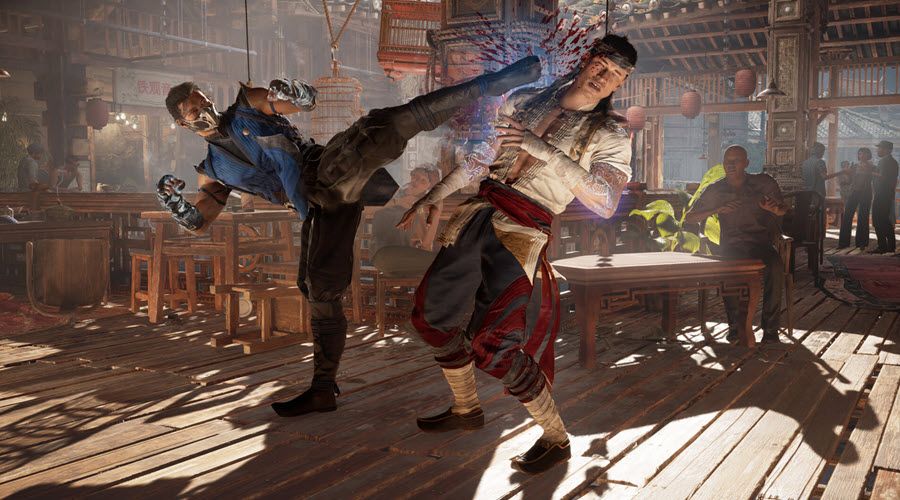Mortal Kombat 1

Review
Back in the day, I used to play a lot of Mortal Kombat on the classic arcade machines (along with Tekken and Street Fighter), so I feel really lucky to have seen how this series has evolved throughout the years. Developed once again by NetherRealm Studios, guided by the legendary Ed Boon, Mortal Kombat 1 is a brand new reboot that follows the events of MK11: Aftermath and improves the core structures of the gameplay without reinventing the wheel. Old and new fans can find a completely new story mode that is very intriguing and extremely curated, featuring classic cinematic cutscenes and deadly QTEs. Without going into massive spoilers (in case you haven’t played the Aftermath expansion yet), the plot starts with one of the main characters taking control of time and resetting the timeline, creating a new universe where everyone has different roles. The story is divided into 15 chapters, and each one focused on a specific character, allowing you to discover their origins while also learning their different moves. Actually, the story mode is a really good place for new players who want to learn and practice combat while having fun. There is, of course, a separate detailed tutorial mode, but the story mode should probably be the first step for many players. Compared to the story mode of the previous games, which was essentially built as a way to present all the characters in the fastest way possible, the narration in MK1 is much slower, with longer cutscenes and well-written dialogues, jokes and twists.

The game also introduces the new Invasion mode, which is basically a single-player board game with very soft RPG mechanics. You pick up a character and a companion (known as kameo) and you progress through different tiles in a semi-open world. Each tile has different fights, mini-games, challenges and of course rewards waiting to be unlocked. The latter can be specific for the Invasion Mode but also apply to other modes, like in the case of cosmetics (gear, skins, fatalities, color palettes etc.). You can also level up your character with different stats as well upgrade your talismans and purchase consumables. The Invasion mode is clearly meant to be end-game content, but also works as a live service format. Every six weeks there will be a new seasonal update, featuring different storylines and scenarios. While it certainly looks like a clever way to keep players engaged for a long time, I found this mode to be rather repetitive and too simple with its RPG mechanics. It also feels a bit grindy that you can only unlock everything either by paying (through microtransactions) or by spending a lot of time with each character in order to unlock all they have, including their fatalities. In comparison, the recent Street Fighter 6 World Tour mode works much better, perfectly tying together story, characters and live service content. There are other modes in MK1, such as the classic offline PvE towers with various difficulties, and online PvP modes (ranked and casual), which don’t include any surprises.
The MK1 roster includes many historic characters from the series, such as Scorpion, Sub-Zero, Johnny Cage, Raiden, Kitana, Baraka and others. This time, they are assisted by Kameo fighters who can be summoned during fights to unleash their special attacks. These allies can be selected through a different list that also includes iconic characters such as Sonya, Stryker, Cyrax and Motaro, who come with their own fatalities and cosmetics to unlock. While the Kameo addition is certainly refreshing and fun (especially if used to chain combos), I felt a bit disappointed that none of these fighters are playable, because I used to play with many of them (especially Motaro in MK3). That said, combat hasn’t changed much from the previous title, being always brutal and gory, with spectacular fatalities closing each fight. Perhaps movements feel a bit slower this time, which improves coordination for less skilled players. Overall, it’s an easy-to-learn-hard-to-master kind of combat system, in which longer combos require good practice and skill.
Graphically speaking, the game is simply gorgeous, especially the character models which look better than the previous game and more realistic. It’s so beautiful that transitioning from cutscenes to fights during story mode feels truly smooth and immersive. The performance is generally good, though I experienced a few sudden frame drops in some scenarios. I also ran into an annoying bug, a black screen randomly appearing while moving through the main menu. I couldn’t find any solution for this, so my only option was to constantly restart the game each time it happened.
Story and gameplay-wise, Mortal Kombat 1 is a successful reboot. It’s intriguing, gory and beautifully detailed. Like every new beginning, it needs time to get used to, but the DNA is still the same. NetherRealm Studios didn’t reinvent the wheel and perhaps was too afraid of making drastic changes (like Capcom did with SF6), but at least they built a valid starting point for a new universe. Most importantly, the combat still delivers a brutal and satisfying experience that fans of fighting games will definitely enjoy.
Review written by Sonic Punk for Zeepond.com
Mortal Kombat 1 Steam Store Page
Positives
+ Spectacular Story mode+ Brutal Kombat with new Kameo system
+ Beautiful and realistic graphics
Negatives
- The Invasion Mode is too basic and repetitive- Few technical and performance issues
Review Summary
Mortal Kombat 1 is a successfully reboot that features a compelling story, amazing graphics and the same old brutal combat with a brand new Kameo system.
Share this review!
Zeepond Rating: 8/10










Video
Game Categories
All Game Reviews (1356)Hardware Reviews (0)
Action (341)
Adventure (151)
Alpha Games (2)
Anime (5)
Board Games (3)
Casual (135)
First Person (19)
First Person Shooter (30)
Hardware (0)
Horror (38)
Massive Multiplayer Online (4)
Pixel Graphics (23)
Platformer (94)
Puzzles (65)
Racing (26)
Role Playing Game (62)
Simulation (53)
Sports (20)
Strategy (246)
Third Person (12)
Utility software (1)
Virtual Reality (22)

